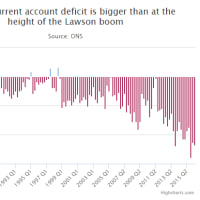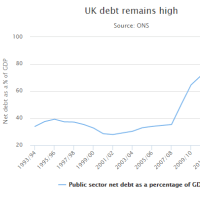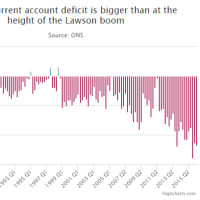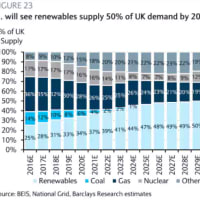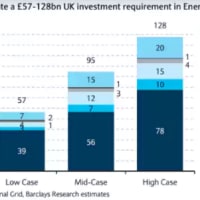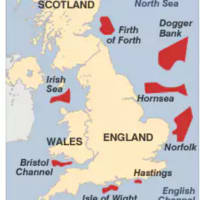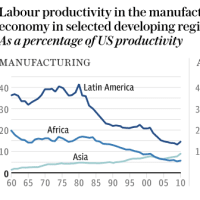Brazil faces 1970s stagflation as resource boom wilts
(ブラジル、資源ブーム衰退で1970年代ばりのスタグフレーションに)
By Ambrose Evans-Pritchard
Telegraph: 7:34PM BST 30 May 2013


(ブラジル、資源ブーム衰退で1970年代ばりのスタグフレーションに)
By Ambrose Evans-Pritchard
Telegraph: 7:34PM BST 30 May 2013
Brazil has been forced to tighten monetary policy to curb inflation despite a slump in growth and a manufacturing crisis, raising fears that the country's economic model is breaking down.
ブラジルは、成長低迷と製造業危機にも拘わらず、インフレ対策のために金融引き締めを余儀なくされており、同国の経済モデルが壊れたのではないかとの懸念を高めています。
The central bank raised interest rates a half point to 8pc, bucking the worldwide trend towards looser money. The surprise move came hours after the release of data showing growth remained stuck at 1.9pc in the first quarter.
ブラジル中銀は金利を8%まで引き上げ、世界的な金融緩和トレンドに逆行しました。
このサプライズ利上げが行われたのは、第1四半期の成長率は1.9%のままだったと示すデータが公表された後のことです。
This was far short of expectations for the fifth quarter in a row and dashes hopes of a quick return to pre-crisis growth rates. The country grew just 0.9pc last year, a recession in emerging market terms.
これで5期連続、期待を大きく下回る結果が出たこととなり、危機前の成長率を迅速に取り戻す希望は潰えました。
ブラジルの昨年の成長率は僅か0.9%であり、新興市場の定義で行けば不況になります。
"Brazil is stuck in a 1970s 'stagflation' trap," said Lars Christensen from Danske Bank. "It has rising inflation and falling long-term growth. There is obviously a structural problem and it is getting worse.
ダンスク・バンクのラーシュ・クリステンセン氏は次のように語りました。
「ブラジルは1970年代の『スタグフレーションの罠』にはまっている」
「物価は上昇し長期的成長は下降している。明らかに構造的な問題があり、それは悪化しつつある」
"The country is a very good illustration of why emerging markets have been doing so badly lately. They are trying to manage their problems by fiddling around with wage and price controls and other half-baked measures to treat the symptoms. There is a whiff of Argentina to this."
「この国は、新興市場が最近芳しくない理由をよく描き出している。新興市場は賃金や価格の操作などの中途半端な応急処置を行って、問題を解決しようとしている。これはちょっとアルゼンチン臭いね」
The Bovespa index of stocks in Sao Paulo is down by more than a third in dollar terms since early 2010, and has entirely missed the roaring global equity rally over the past year. The real has fallen 8pc since March and has broken out of its trading band.
ボベスパ指数はドル建てにして、2000年初頭から3分の1以上下落しました。
また、昨年の世界的な株高にも全く乗れませんでした。
ブラジル・レアルは3月から8%下落しており、取引バンド(許容変動幅)から外れてしまいました。
Finance minister Guido Mantega gave a green light on Thursday to a further slide in the currency, saying the authorities were no longer relying on the exchange rate to check inflation, now almost 7pc.
ギド・マンテガ財務相は木曜日、更なる通貨下落を承認して、当局はもはや、現在7%近いインフレ率の抑制を為替レートに依存出来ないと述べました。
"The sell-off in the real has been particularly violent," said Benoit Anne from Societe Generale, calling it a symptom of a broader flight from the developing world as the US Federal Reserve prepares to tighten policy. "We think that there is a powerful shift in the thematic drivers of global emerging markets. This is the end of the bull market. It is an absolute bloodbath for rates [fixed income]," he said.
「ブラジル・レアルのセルオフは特に激しかった」とソシエテ・ジェネラルのブノア・アン氏は言い、これはFRBが金融緩和策を終わらせる準備をする中で起こっている、新興国からの大規模な資金流出の症状だと述べました。
「世界の新興市場の主題的推進力が大きく変わっているのだと思う。これはブル・マーケットの終わりだ。(債券)金利にとって最低最悪だ」
Aloisio Teles from Nomura said Brazil's apparent abandonment of the strong real policy risks spinning out of control. "The real is having a very bad hair day," he said.
野村證券のアロイジオ・テレス氏は、ブラジルが明白に強いレアル政策を放棄したことで制御不能になる危険性があると言いました。
「レアルは何をやっても上手く行かなくなる」とのこと。
Brazil has a war chest of €379bn (£325bn) in foreign reserves, and its public debt is no longer in dollars. It is at little risk of an old-fashioned currency crisis, but faces other deep problems.
ブラジルには3,790億ユーロの外貨準備があり、公債はもはやドル建てではありません。
旧来の通貨危機に直面するリスクはほとんどありませんが、他の深刻な問題に直面しています。
The economic boom for much of the past decade was driven by exports of iron ore, grains and other raw materials, mostly to China. The commodity bonanza caused a surge in the real and an erosion of the country's industrial base, a textbook case of the "resource curse". Brazil's car exports have been in freefall. Overall manufacturing output is still 3pc below the pre-Lehman peak, a pattern closer to southern Europe than Asia's tigers.
この10年間の殆ど続いていた好況の推進役は鉄鉱石、穀物、その他原材料の輸出で、そのほとんどが中国向けでした。
商品バブルはブラジル・レアルを高騰させ、同国の産業基盤を損ないました。
典型的な「資源の呪い」です。
ブラジルの自動車輸出は自由落下しました。
製造業総生産は今もリーマン・ショック前の水準を3%下回ったままであり、アジアの新興国よりも南部欧州に近いパターンを辿っています。
A 30pc crash in iron prices this year and the broader commodity slide have choked recovery and left the country with a current account deficit of 3pc of GDP. "This should raise a red flag," said Marcio Garcia from EconoMonitor, predicting a "melancholic ending" to Brazil's flagging catch-up drive.
鉄鉱石の価格が今年に入って30%下落したことと、より広範な商品価格の下落により、景気回復は足止めされ、ブラジルは対GDP比3%という経常赤字を抱えることになりました。
「これは警告を促すはずだ」とEconoMonitorのマルシオ・ガルシア氏は言い、ブラジルの減速するキャッチアップの「憂鬱なエンディング」を予測しました。
"They enjoyed the party while it lasted but they didn't do their homework on clearing infrastructure bottlenecks," said David Rees from Capital Economics.
「彼らは祭の間は楽しんでいたが、インフラ・ボトルネックを解消するという宿題をやらなかった」とキャピタル・エコノミクスのデイヴィッド・リース氏は言いました。
Brazil languishes at 130 in the World Bank's rankings for ease of doing business, below Bangladesh and Ethiopia. It is at 116 for enforcing contracts, 121 for starting a business and 156 for paying taxes.
ブラジルは世銀のビジネス・ランキングで、バングラデシュやエチオピアを下回る130位となっています。
契約履行では116位、起業では121位、納税では156位でした。
The World Economic Forum ranks Brazil 107 for infrastructure, falling to 123 for roads and 135 for ports. It is 118 for wage flexibility, 123 for tariffs, 129 for customs red-tape and 132 for maths and science education. The overall picture falls far short of what is needed for a country hoping to break out of the "middle income trap".
また、世界経済フォーラムはブラジルのインフラを107位にランク付けし、道路では123位、港湾では135位に下げました。
賃金の柔軟性では118位、関税は123位、規制は129位、理数系教育は132位でした。
全体的に見て、「中所得国の罠」からの脱出を願う国に必要な水準には全く達していません。
The Left-leaning government of Dilma Rousseff has resorted to industrial subsidies and trade barriers to protect jobs, a return to practices that have blighted Latin America for decades. The contrast with Mexico is becoming stark.
ジルマ・ルセフ大統領の左派政権は、雇用の保護のために産業助成と貿易障壁という手を打ち、数十年間に亘って南米を破滅させてきた慣行に逆戻りしました。
メキシコとの違いは明らかになるばかりです。












